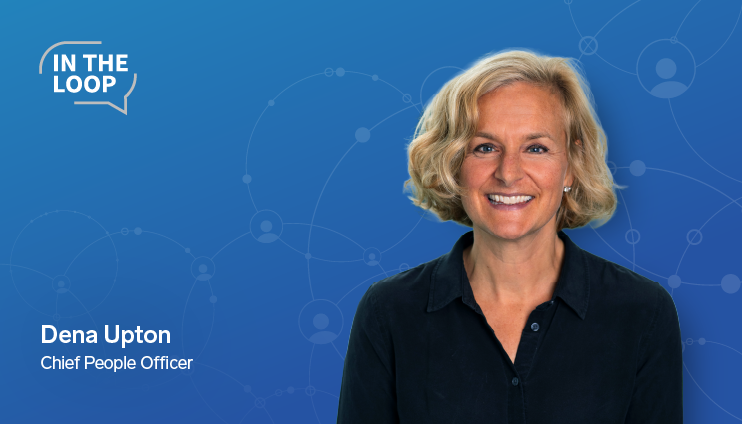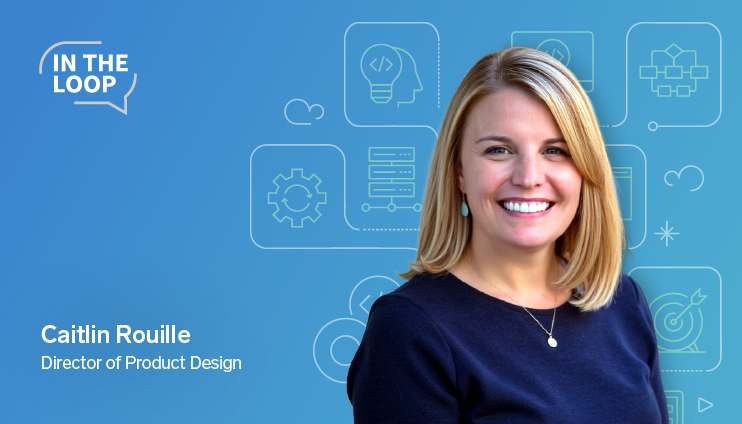The Operating System Powering Our Culture
Last week, we shared an important milestone for Advisor360°: the launch of Advisor360° Wealth OS, our AI-native advisor experience designed to help...
Solve your current pain points with our award-winning solutions.
Increase automation with our modern wealth platform.
The leading end-to-end wealth management platform.
Our team works to anticipate and surpass our clients’ expectations.
Merge our open, integrated platform and its solutions into your tech stack.
The #1 reason advisors switch firms is the desire for better technology.
4 min read
 Ronnie Campbell
:
3/16/23 3:59 PM
Ronnie Campbell
:
3/16/23 3:59 PM

This is part three of a three-part series designed to explain how our Unified Data Fabric™ (UDF) collects and enriches all types of data from hundreds of sources and consolidates it into a rich, unified format that creates the digital connected experiences that make it easier for advisors to manage their clients’ wealth using our platform.
In the final installment, I will be discussing the difference between data aggregation and UDF.
Wealth management data is complex and difficult to aggregate. Without any industry standards, terminology can be confusing and lack context. Data on its own is unreliable, even after it has been consolidated into a single format. If the data has no context, mistakes like a 200-year-old person can leave your data fallible. So, it’s understandable that we are often asked by broker-dealers to explain the difference between simple data aggregation and our proprietary data model that transforms data into useful insights.
I sat down and spoke with Michele Doyle, Advisor360°’s Vice President, Enterprise Data and Analytics, to talk about our proprietary Unified Data Fabric™ (UDF)—which powers our digital wealth management software—and set the record straight on how it compares to data aggregation.
Data aggregation is a process that takes wealth management data from multiple vendors or sponsor companies and combines it into a single format.
Many institutions provide similar types of data in the same format. That being said, there are still some subtle, or not so subtle differences, of how companies choose to interpret their own data into that format. While the format is consistent, the use of the format by those vendors and sponsor companies may not be.
An example of this is when a data aggregator provides financial transaction data and has an attribute used to identify the type of transaction the record is for. Within the same aggregation format, different companies use different definitions and codes to align to the transaction types. That means it takes extra work to align and convert those codes into the same context even though the format is the same.
The work to align data in the same format to data in the same context is a hallmark of our UDF. So, when you are talking about data aggregation through that lens, what you are talking about is a consistent and uniform format.
This explains why data aggregation is not always sufficient for your needs because consolidating data into a single format does not mean that the data retains its context or provides useful insights.
Watch our 1-minute video titled “Understanding today’s data management challenges” for further insight.
Enter our Unified Data Fabric. Our UDF is a proprietary data model that collects and enriches all types of data from hundreds of sources and consolidates it into a rich, unified format.
What our UDF does is bring lots of data in (e.g., contact data, accounts and trusts, insurance, holdings, and transactions) and combine it into a single format, but there is a fair amount of curation that goes on as it is being put into that format. A data aggregator only cares if the information fits into their file format and if it is valid. Our UDF is more nuanced.
We take a close look at things like the transaction type codes that are being used when we bring multiple financial transactions into our platform, and we do a deep analysis to make sure that when that information is brought into our system, it is consistent in both use and format. That means we must do a retranslation—which may seem unusual, why would we provide an additional translation on top of the data aggregation we already did? But we do it so that as we are bringing transactions into our platform, the context and format remain uniform, allowing our internal systems to use them quite freely in the same way throughout the system. That is the benefit of taking on that extra work, so when you are looking at one screen, it is telling an accurate story.
Here is a simple breakdown of what they both do and what UDF adds to the process:
| Activity type | Data aggregation | Unified Data Fabric |
|---|---|---|
| Connect | Data is connected across products | Data is connected across all investments, banking, and insurance products |
| Integrate | Data is integrated into a complete and comprehensive view | Data is integrated into a complete and comprehensive household view |
| Cleanse | Data is cleansed and consistent | Data is cleansed and consistent, so it means the same thing across multiple sources |
| Enrich | X | Data is consolidated into a rich, unified format that makes it more accurate, quicker, and easier to gain insights |
| Store | X | Data is stored in state-of-the-art data centers to ensure it is available whenever you need it |
| Consume | X | Data is timely to ensure it remains usable, accurate, and ready to consume |
We did not come up with UDF just so we could put our own spin on data aggregation. We created it because we recognized that inconsistent and disconnected data is hard to manage and use. We decided that our data had to be highly curated throughout the process of moving that data into our platform and through our platform. We put a significant amount of time and energy into finding inconsistencies in the data that do not look quite right.
You may be interested in this 2-minute video on the benefits of high-quality data.
The UDF data quality is focused on positional reconciliation. Our portfolio accounting is really a ledger system. As data comes into it, if things do not add up and match in the ledger, it kicks it out for someone to research. What that does is it comes back into the lower parts of our data processing, which is our UDF, and we can refine it further. It is a self-perpetuating model where we continue to get data cleaner and more reliable.
UDF is different because it extends not just until transferring the data into our platform, but throughout the use of the data on the platform. It is continually monitored and refined, becoming this elegant ecosystem of cleansed data and clarified processes that supports top wealth management firms. We not only aggregate the data, but we transform it into something insightful.
The difference between data aggregation and UDF is that aggregation is taking data and combining it into one unified format. UDF is doing that plus enriching and curating that data so that it retains its context, is easier to use, and can supply further insights.
In the first installment, I shared resources that further explain our UDF, while in the second installment, I discussed the value UDF brings to advisors, empowering them to make smarter and faster decisions.
Enjoying this series? Sign up to receive our blogs automatically as they are released.
Ronnie Campbell is a Senior Content Marketing Associate at Advisor360°, responsible for generating insightful and engaging content that develops the company’s social media presence and story.

Last week, we shared an important milestone for Advisor360°: the launch of Advisor360° Wealth OS, our AI-native advisor experience designed to help...

Top advisors aren’t born—they’re built. And their habits are hiding in your data.

We live in a world of intelligent technology. The apps we use for travel, shopping, fitness, and healthcare remember preferences, anticipate needs,...